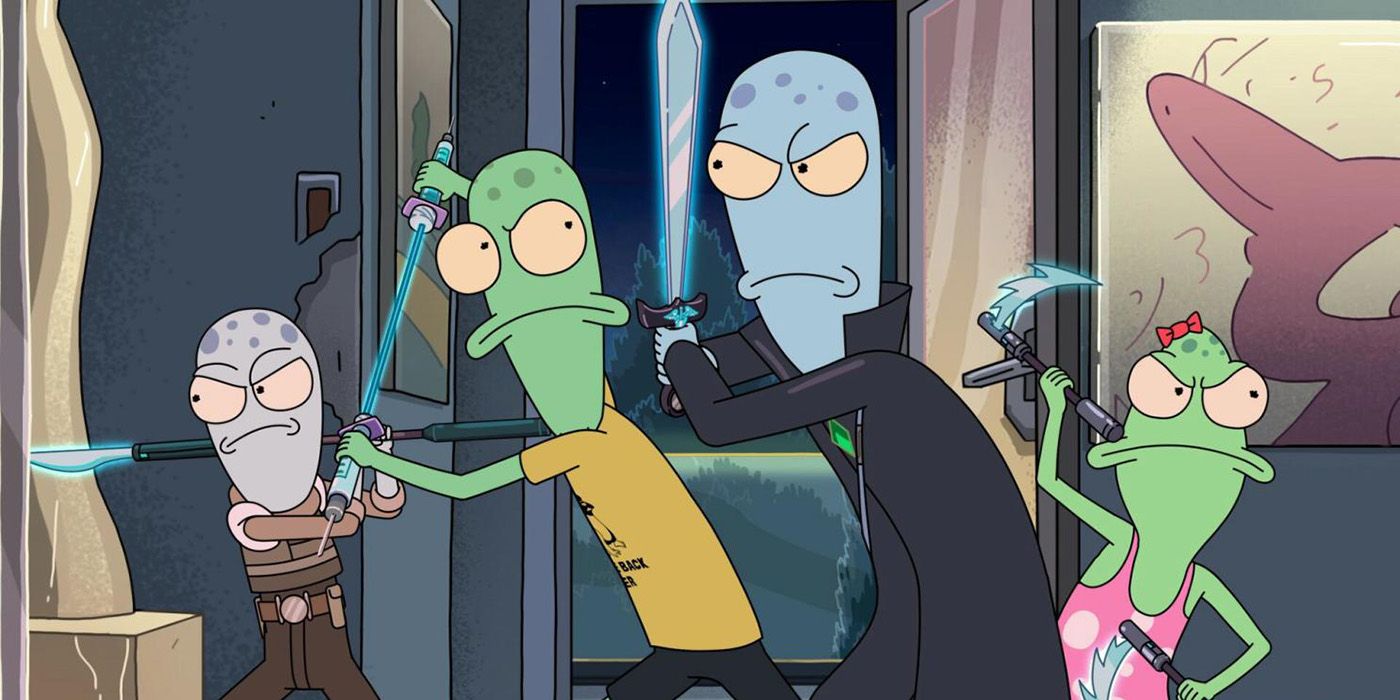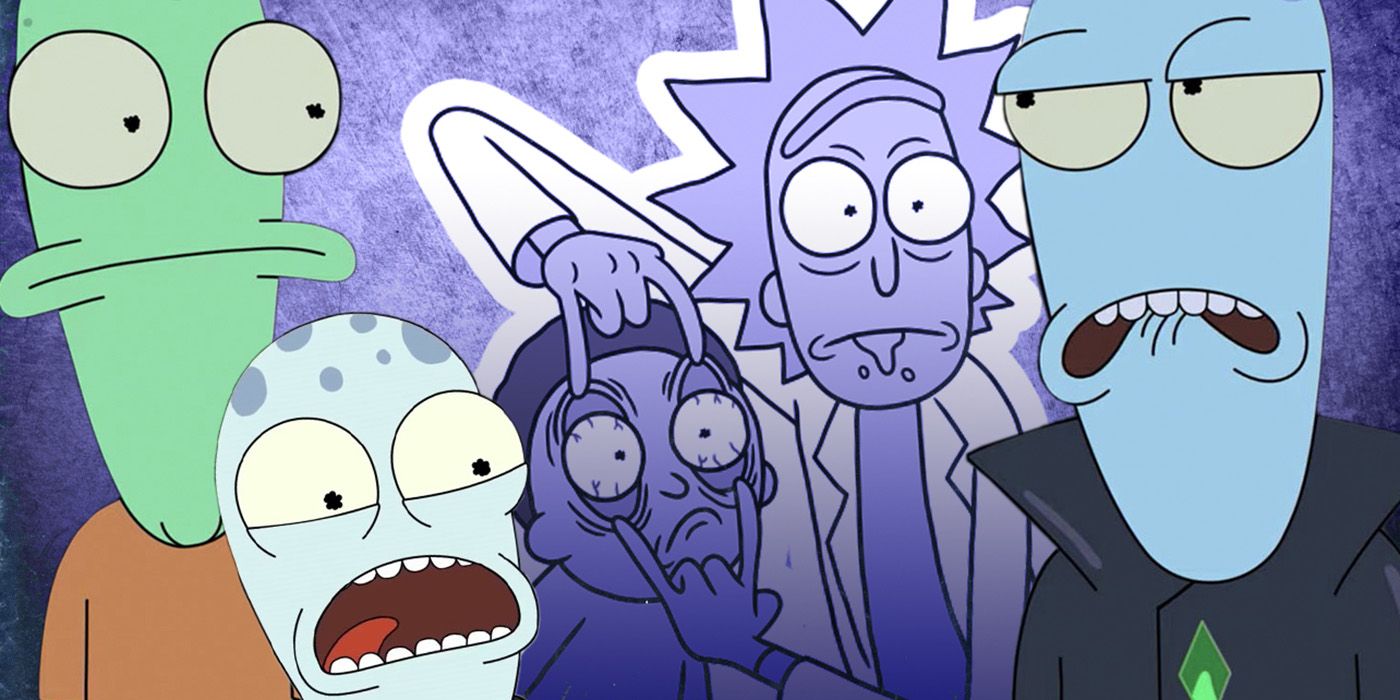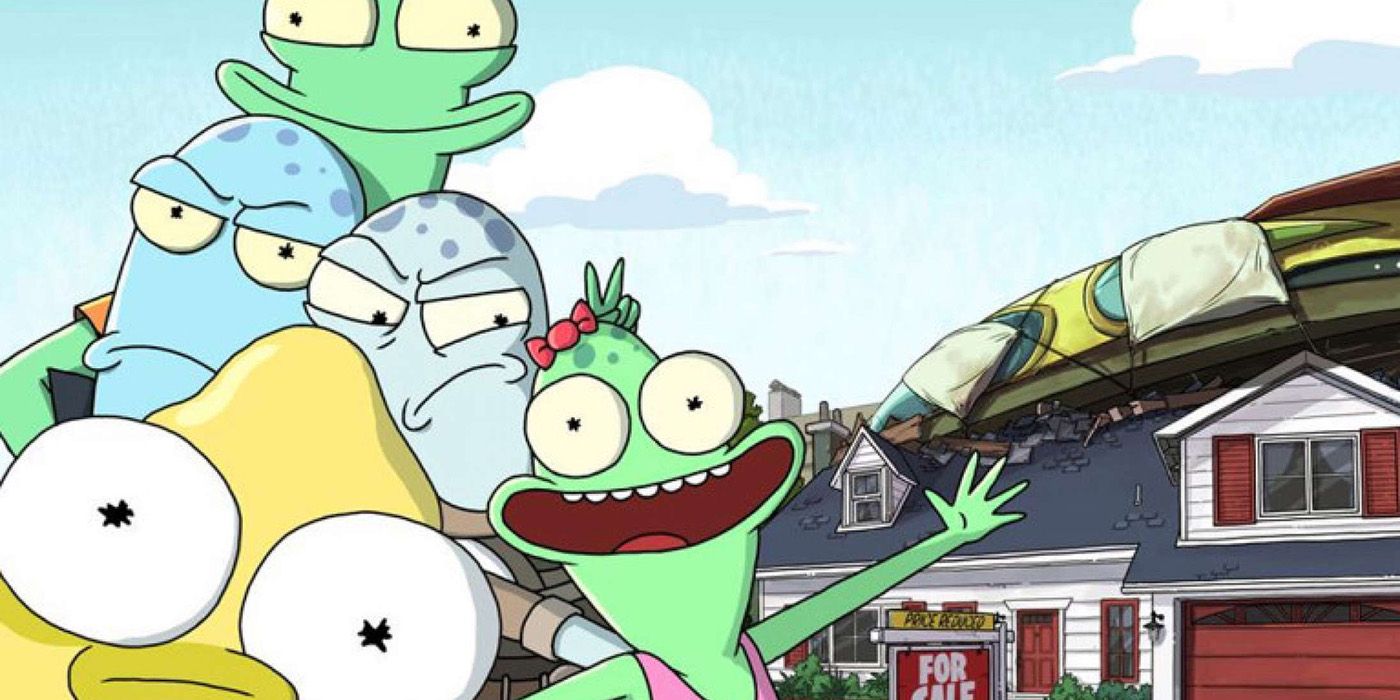As viewers around the world are forced to shut themselves inside, the streaming wars intensify. Each service tries to differentiate itself by producing more exclusive content than its opponents. Netflix was the original kingpin of the market, only to be swiftly elbowed by Amazon Prime, Disney+, Apple TV+, Hulu and many others. In 2018, to draw the attention and monthly cash flow of new subscribers, Hulu contracted Justin Roiland, co-creator of Rick and Morty, to produce two seasons of an original animated sci-fi comedy series called Solar Opposites. The first season debuted in May of 2020 with the second to follow this March. Is it any good? Is it worth subscribing to Hulu?
The success of Rick and Morty cannot be understated. It is one of the most popular animated television series to come out this century. The pairing of Dan Harmon (of Community fame) and Justin Roiland with a team of talented artists, writers, and voice actors is consistently epic. It has earned several awards over the last few years and has even pulled a few impressive pranks on its fanbase. It is no wonder, then, why Hulu would turn to Roiland to take on an original animated production. The two main characters of Solar Opposites are Korvo and Terry, voiced by Roiland and Thomas Middleditch, respectively. The show’s premise is about an alien family, Korvo, Terry, and their two replicants, Yumyulack and Jesse (basically their clones/kids), who crashed landed on Earth after their home planet Shlorp was destroyed by a comet.
The aliens want to both fit in and be liked by their neighbors and escape the oddities and backwardness of human life at the same time. Additionally, there are two subplots. One is about shrunk people living in a terrarium in Yumyulacks Wall, which is basically a second show. The second follows the mischievous exploits of the Pupa, the “baby” of the show who is a lifeform designed to one day grow and terraform planet Earth into a replacement Shlorp.
Where Rick and Morty plays with philosophy, existentialism, and meta-comedy, Solar Opposites plays with social topics such as gender roles, racism, the immigrant experience, and the insecurities of humanity. Most of its episodes revolve around the characters desiring to be liked by humanity, whether in high school or in the local homeowner association, for example, and then using sci-fi rigmarole to cheat at their problem only for it to backfire and cause mass destruction and death. Solar Opposites does not shy away from profanity, or gratuitous violence, or allowing the characters to regularly break the fourth wall. Like Rick and Morty, Solar Opposites breaks the fourth wall by directly addressing the elements of the plot occurring around them. The characters will say things like “character arc,” or “controversial episode,” and often refer to the Hulu streaming service itself. The show playfully hides Easter Eggs to Rick and Morty and shout outs to The Simpsons and Harmon’s own Community.
Korvo has a lot of similarities to Rick in his intelligence and arrogance, but he, like the rest of his family, has an underlying desire to be liked by humans and included in their world. The source of, and the solution to, most of the sci-fi problems derives from Korvo. He hates Earth and wants to go elsewhere, but at the same time is endeared by it and just wants to be liked by everyone. Terry serves as the outsider character for the audience. Whatever the complication of the episode, Terry asks Korvo all the questions the audience needs to know to understand what they are talking about.
It is unusual how little Terry knows about his own homeworld and culture. He is so obsessed with Earth culture that it is almost as if he lost all his knowledge of his previous life on Shlorp, except where it is convenient for the plot. Jesse is their daughter, sort of, who, like her replicant adult Terry, wants to fully participate in human activities. For her, its high school. Both Terry and Jesse love being on Earth and assimilated the fastest they could to its culture (to the best of their alien comprehensions). Yumyulack, their sort of son, is the replicant of Korvo and preserves the same seriousness and attachment to Shlorp as Korvo. He picks on his little sister, and, like his adult, has a desire to be liked by the humans around him. In his case, the popular group at high school. Yumyulack uses a shrink gun to capture humans and stick them in a massive wall-sized terrarium between his and Jesse’s bed.
Yumyulack’s Wall became a main arc in Solar Opposites, with the penultimate episode entirely devoted to it. Yumyulack’s Wall explores a microcosm of society, where all the shrunk people are ruled by a dictator known as The Duke, most worship a religion dedicated to Jesse known as the Bowinian Church, and where life is survival or obedience.
Solar Opposites feels like a long form version of something seen on Rick and Morty’s Interdimensional Cable box. It takes some of the ingredients of Rick and Morty, the “sciencey” stuff, the meta comedy, the fourth wall breaking, and mixes it with sitcom tropes like a dysfunctional family and fitting in at high school or fitting in with the neighbors.
Subscribers to Hulu likely have already seen Solar Opposites. It was one of their top streaming series for the Spring of 2020. For those who do not have the subscription, however, Rick and Morty is still the far better of show. Perhaps the second season of Solar Opposites will elevate it to the next level? It is only fair to allow a show to grow into its own over the course of the first few seasons, as all great shows did in their time.
Season 2 of Solar Opposites is scheduled to stream on Hulu March 26, 2021.



